Welcome to On Verticality. This blog explores the innate human need to escape the surface of the earth, and our struggles to do so throughout history. If you’re new here, a good place to start is the Theory of Verticality section or the Introduction to Verticality. If you want to receive updates on what’s new with the blog, you can use the Subscribe page to sign up. Thanks for visiting!
Click to filter posts by the three main subjects for the blog : Architecture, Flight and Mountains.
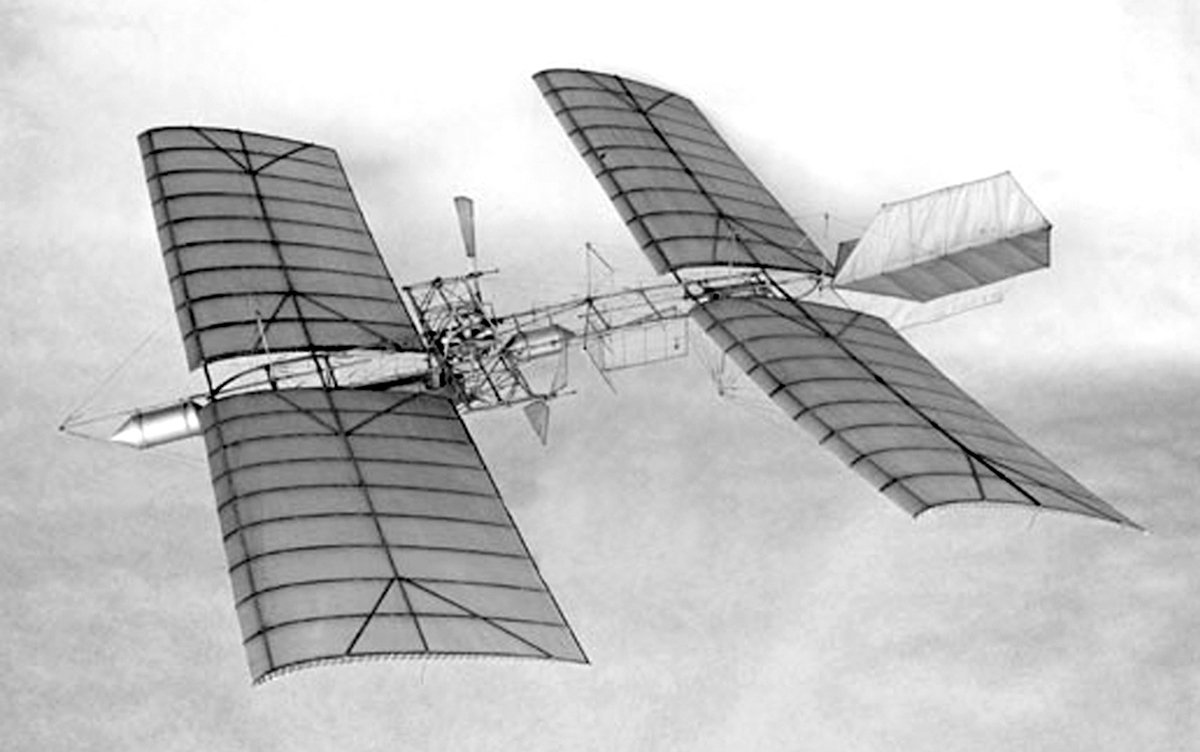
Samuel Langley’s Aerodrome
Samuel Langley was an astronomer and physicist who was the third secretary of the Smithsonian Institution. He was also a pioneer of aviation, most famous for his designs of the Langley Aerodrome, which he built and tested from 1901 to 1903. Pictured above is a photo of his Aerodrome No. 5, which was a pilot-less model that had success flying. Langley was unable to repeat this success with larger, piloted designs, however.
“The honor of inventing the airplane cannot be assigned wholly to one man; like most other inventions, it is the product of many minds.”
-Richard Pearse, Kiwi inventor and aviator, 1877-1953.
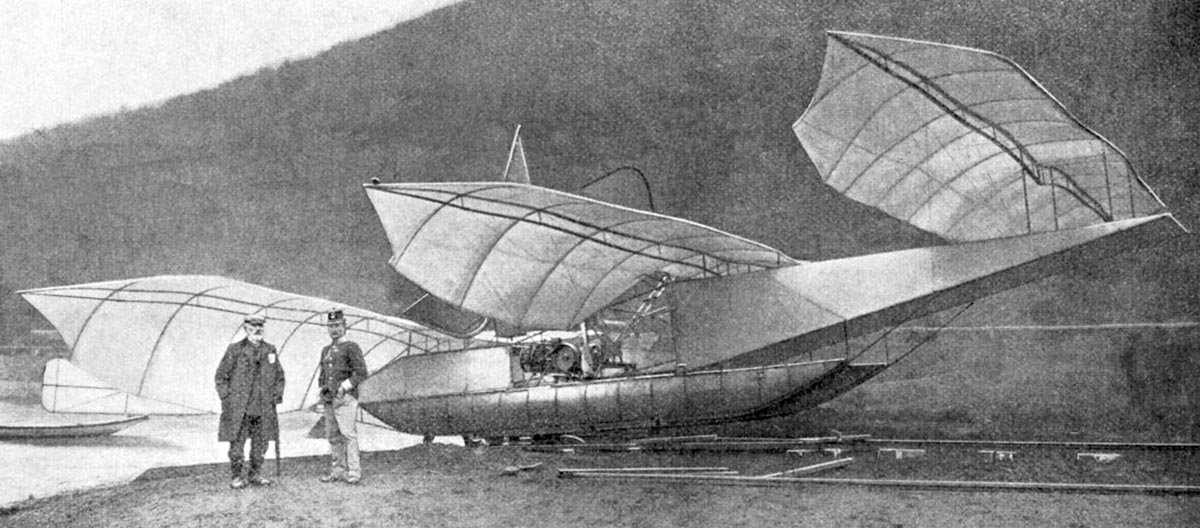
Wilhelm Kress’ Drachenflieger
Pictured above is the Drachenflieger, which was an experimental aircraft designed in 1901 by Austrian engineer Wilhelm Kress. It’s name means Dragon Flyer in German, and it was an attempt by Kress to build the world’s first heavier-than-air flying machine. The craft consisted of a central undercarriage and three large pairs of wings, each set at a different height so they wouldn’t interfere with one another. It was meant to take off and land on the water, so Kress designed it to rest on two pontoons.
“The airplane has unveiled for us the true face of the earth. For centuries, highways had been deceiving us. They shape themselves to man’s needs and run from stream to stream.”
-Antoine de Saint-Exupéry, French writer and aviator, 1900-1944.
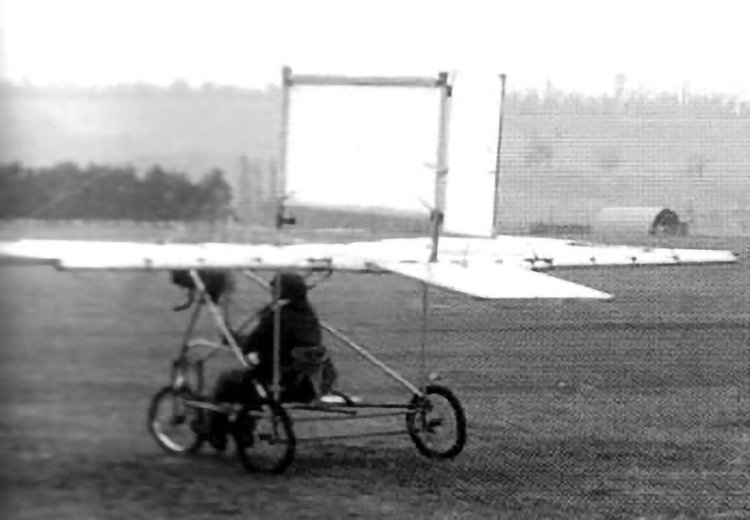
Richard Pearse and a Claim to the World’s First Powered Flight
Pictured above is a photograph of a monoplane designed and built by Richard Pearse in 1903. Pearse was a farmer who had an interest in engineering, flight and flying machines. He had previously designed bicycles and engines, but in the early 1900s he was working on a design for a flying machine. It was a monoplane with a front-mounted propeller and a large wing constructed of a bamboo frame and canvas.
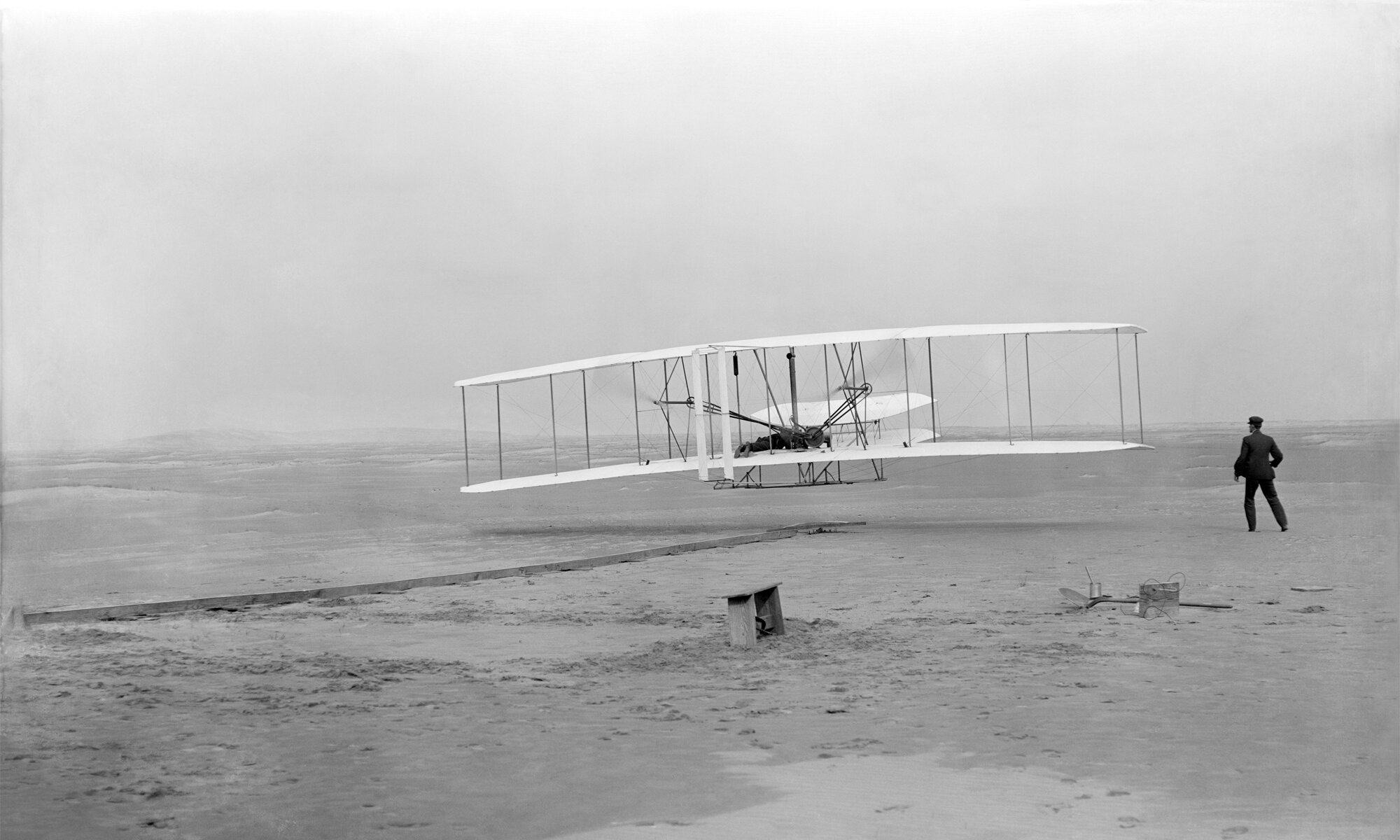
The Wright Flyer and the World’s First Powered Flight
Upon a flat plain outside the town of Kitty Hawk, North Carolina on December 17, 1903, a home-made flying machine lifted off the ground into a headwind. It landed twelve seconds later and 37 meters (120 feet) away from its launch point. This short distance marked the first time in the history of humankind that a manned, heavier-than-air craft had flown under its own power. This event would cement its creators into the pantheon of technological pioneers and make them a household name.
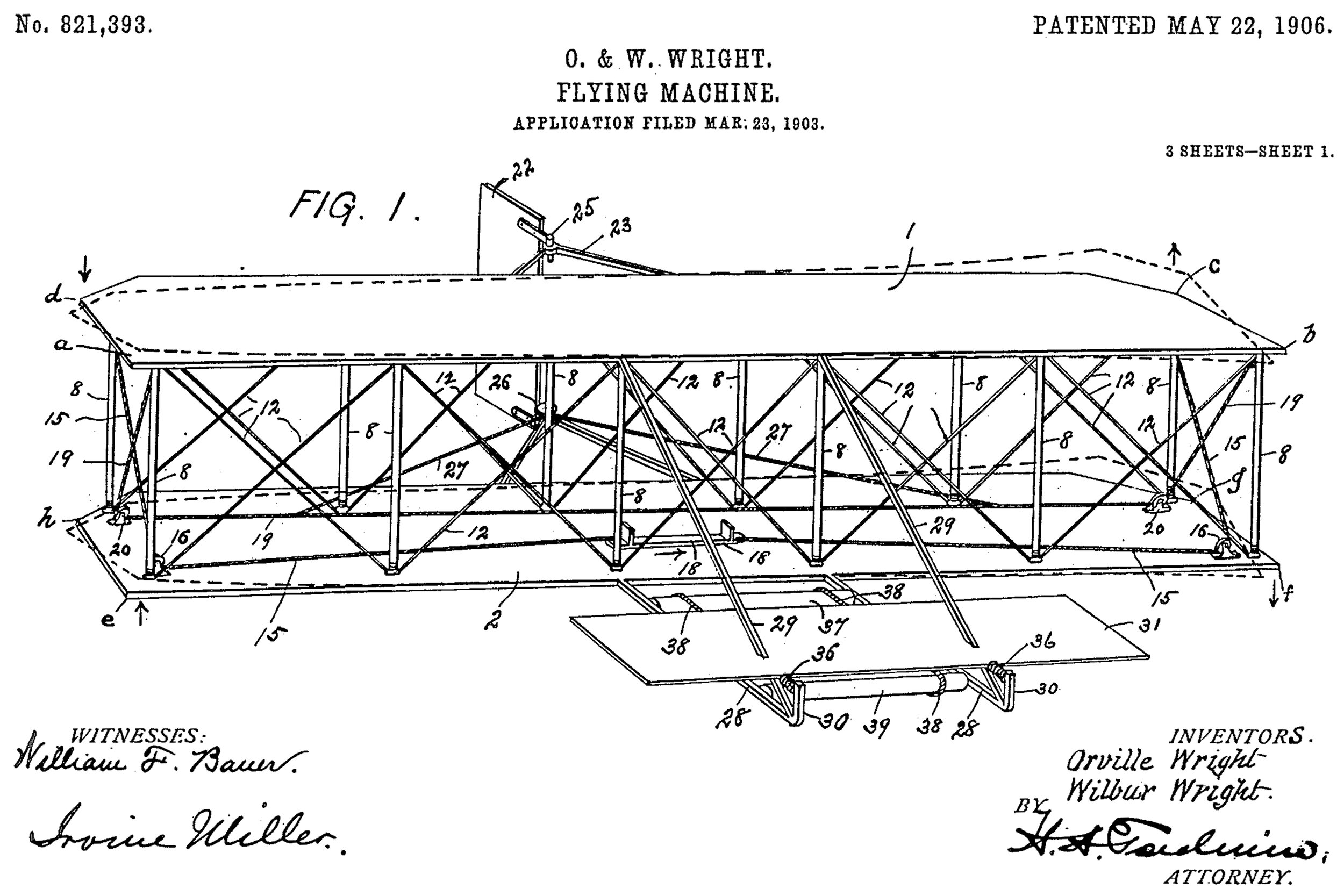
The Wright Brothers’ Flying Machine Patent
I find it fascinating to look at patent drawings of iconic designs throughout history. It’s like you’re getting a glimpse of the design process, before an object enters the public consciousness. Pictured above is a patent for the Wright Brothers’ flying machine, which has since become synonymous with the first ever powered flight. I love how drawings like this strip away any artistic style or vision, and just focus on the object itself. This is a hugely important object that lives on in the history of aviation and human achievement, but it’s rendered here in the most basic, unpretentious way.
“Mechanical wings allow us to fly, but it is with our minds that we make the sky ours.”
-William Langewiesche, American journalist and aviator, born 1955.
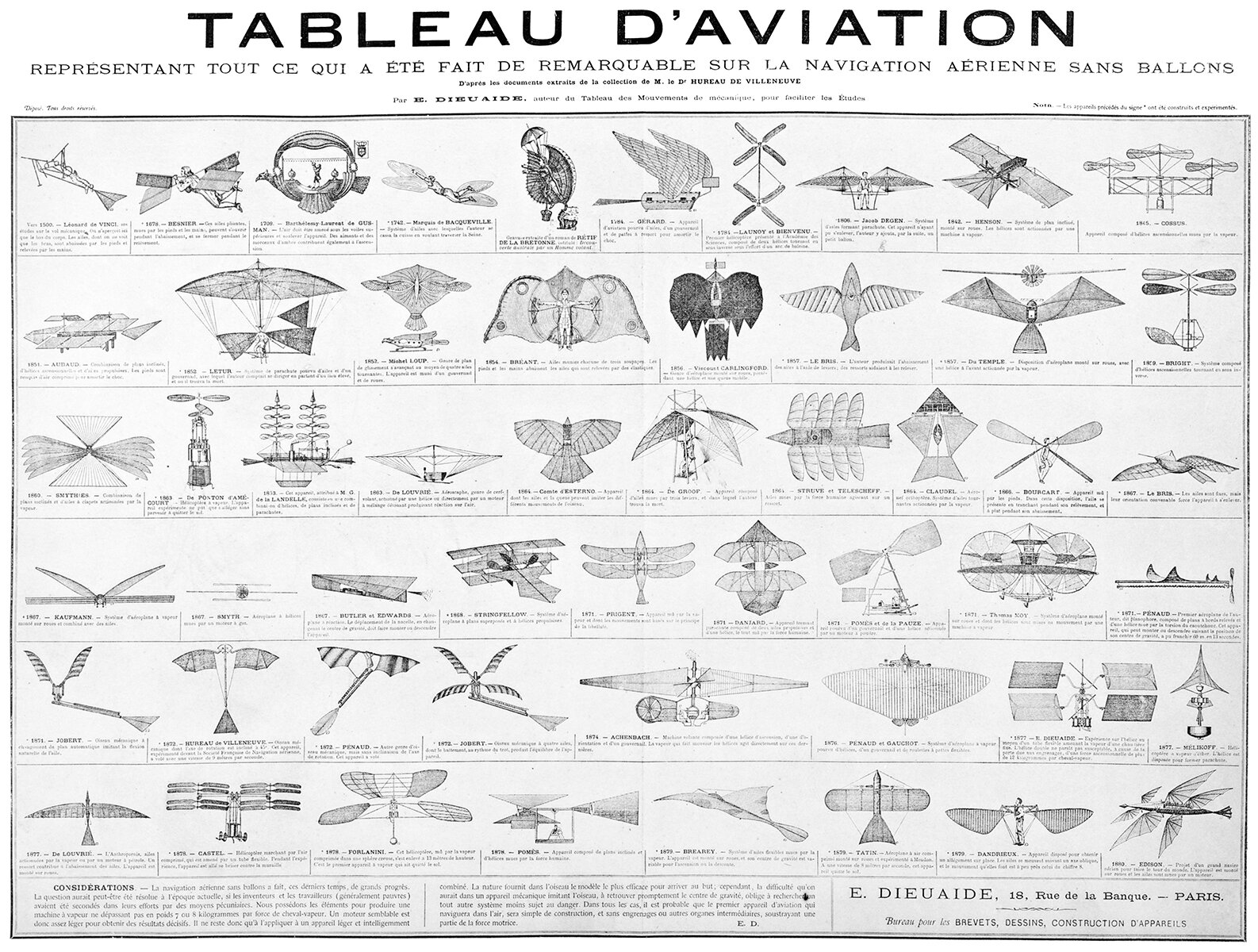
Tableau d’Aviation
The creativity and ingenuity on display throughout the history of flying machines is amazing. A quick survey of the table above shows the wide variety of ideas tried out before we humans successfully learned how to fly. One thing I love about this table is that it includes fictional flying machines as well as real prototypes. This shows that fictional designs can and have influenced the history of flight just as real prototypes have.
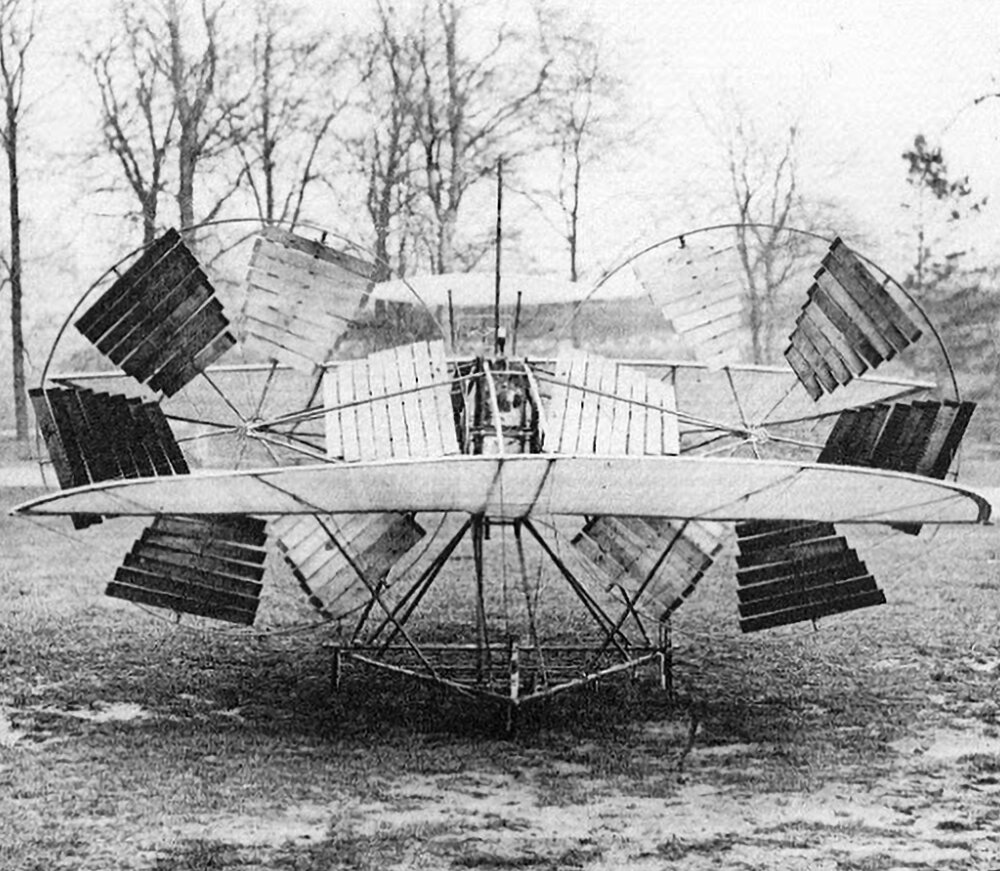
Thomas Moy’s Aerial Steamer
Pictured above is Thomas Moy’s 1875 design for a flying machine, called the Aerial Steamer. It’s an unmanned tandem wing aircraft, with two pairs of wings: one pair at the front and one pair at the rear. Between the two pairs of wings were two massive propellers, which were made of wooden slats in a helix-like pattern that was designed to provide upward and forward lift simultaneously.

Henson & Stringfellow’s Aerial Steam Carriage
This is the Aerial Steam Carriage, patented in 1842 by William Samuel Henson and John Stringfellow. It’s a monoplane that marked a transition from gliders to self-powered machines in the human quest for flight. It’s hard to tell from the picture, but the design is quite large, with a 45 meter (150 foot) wingspan, and it weighed around 1,400 kg (3,000 pounds). Henson and Stringfellow designed the Carriage to transport 10-12 passengers, but it would’ve been too heavy to fly with the steam engine they specified.
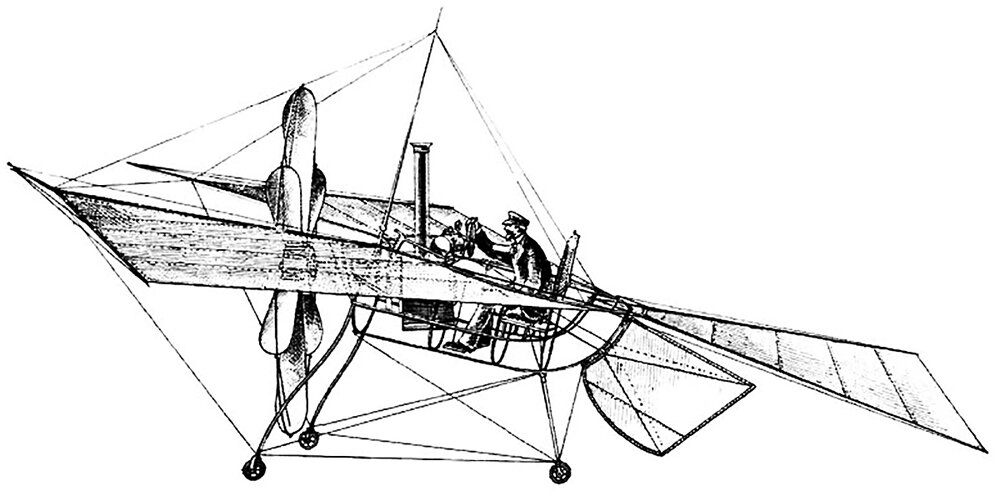
Félix du Temple’s Monoplane
Pictured above is an illustration of Félix du Temple’s design for a monoplane, which he and his brother Luis built and tested in 1874. One such test saw the machine take off from a ski-jump and glide for a bit before safely landing back on the ground. This flight, though short, gave the craft a claim to the first successful powered flight in history.
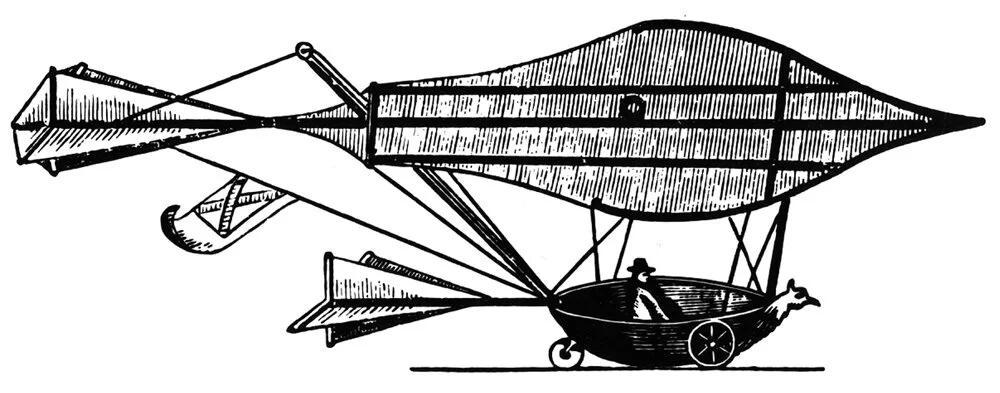
Sir George Cayley and the Science of Aviation
Sir George Cayley was an Englishman who is credited as the first person to understand the underlying principles of flight. He was born in Yorkshire, England in 1773, and from a young age he was fascinated with the idea of flight. Cayley was an engineer by trade, and his early engineering career involved many different fields. He shifted his focus to flight around 1850, and his scientific approach to the study of flight has led him to be called the world’s first aeronautical engineer.
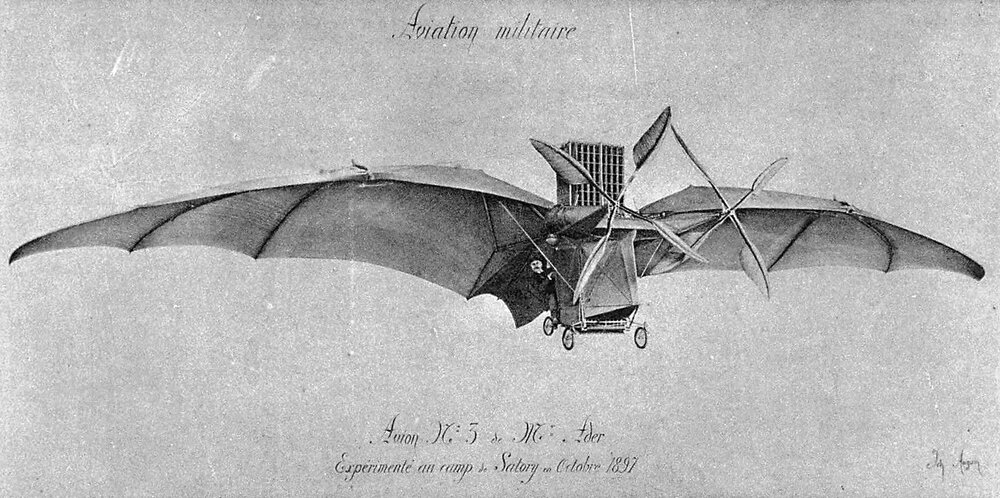
Clément Ader's Éole and Avion III
This is Avion III, an 1897 aircraft designed by Clément Ader. Ader was a French inventor and engineer, who became interested in flight after working on electrical communications and gas ballooning for much of his career. This was the second flying machine he designed. It was an updated and improved version of his first design from 1890, the Ader Éole.
"For some years I have been afflicted with the belief that flight is possible to man. My disease has increased in severity and I feel that it will cost me an increased amount of money if not my life."
-Wilbur Wright, inventor and aviation pioneer, 1867-1912
"The desire to fly is an idea handed down to us by our ancestors who ... looked enviously on the birds soaring freely through space ... on the infinite highway of the air."
-Wilbur Wright, inventor and aviation pioneer, 1867-1912
